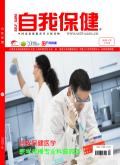FACTORS THAT INFLUENCE POSTTREATMENT ATTENDANCE IN ALCOHOLICS ANONYMOUS: THEORY AND METHODS TO INFORM PROVIDER REFERRALS
引用次数: 12
Abstract
Substance abuse researchers are reporting that weekly posttreatment twelve-step (TS) meeting attendance predicts substantially superior drinking outcomes. Unfortunately, research has consistently observed a high rate of posttreatment AA attrition and underutilization. The primary aims of this analysis are to advance theory of TS affiliation and to test the feasibility of identifying patients who are at risk for posttreatment AA disaffiliation. The analysis uses Project MATCH data consisting of subjects who were assigned to the twelve-step facilitative treatment condition (N = 582). Corroborating other research, results suggest that average weekly attendance at one year posttreatment is associated with abstinent rates almost two times that of less than weekly attendance; unfortunately, over 70% of the subjects attended less than weekly. Analysis using binary logistic regression suggests seven variables can explain a large proportion of the variance among those with less than weekly or no AA attendance at the one year follow-up interval. The results are explained in terms of two theories: First, those who attend weekly may have a greater need for social support (stress and copying theory); and second, those who are a better fit within the AA culture (person-in-AA organizational fit theory). Last, a simple four variable prediction model was able to predict a large proportion of those who reported less than weekly attendance (sensitivity = .78, specificity = .77). Although research has generally reported favorable effects related to treatment, alcohol dependence is best characterized as a chronic-relapsing condition with影响匿名戒酒者治疗后出勤的因素:理论和方法来告知提供者转介
药物滥用研究人员报告说,每周治疗后十二步(TS)会议的出席率预测了显著改善的饮酒结果。不幸的是,研究一直观察到高比率的处理后AA磨损和利用不足。本分析的主要目的是推进TS隶属理论,并测试识别治疗后AA脱离风险患者的可行性。分析使用MATCH项目数据,包括被分配到12步促进治疗条件的受试者(N = 582)。与其他研究相印证的结果表明,治疗后一年平均每周就诊与戒断率相关,几乎是每周就诊不足的两倍;不幸的是,超过70%的受试者参加的时间少于每周一次。使用二元逻辑回归分析表明,七个变量可以解释在一年的随访间隔中每周参加AA少于或没有参加AA的人之间的很大比例的方差。研究结果可以用两种理论来解释:第一,每周参加活动的人可能更需要社会支持(压力和模仿理论);第二,那些更适合AA文化的人(人与AA的组织契合理论)。最后,一个简单的四变量预测模型能够预测大部分报告少于每周出勤的人(灵敏度= 0.78,特异性= 0.77)。尽管研究普遍报告了与治疗相关的良好效果,但酒精依赖的最佳特征是慢性复发,并伴有
本文章由计算机程序翻译,如有差异,请以英文原文为准。
求助全文
约1分钟内获得全文
求助全文

 求助内容:
求助内容: 应助结果提醒方式:
应助结果提醒方式:


